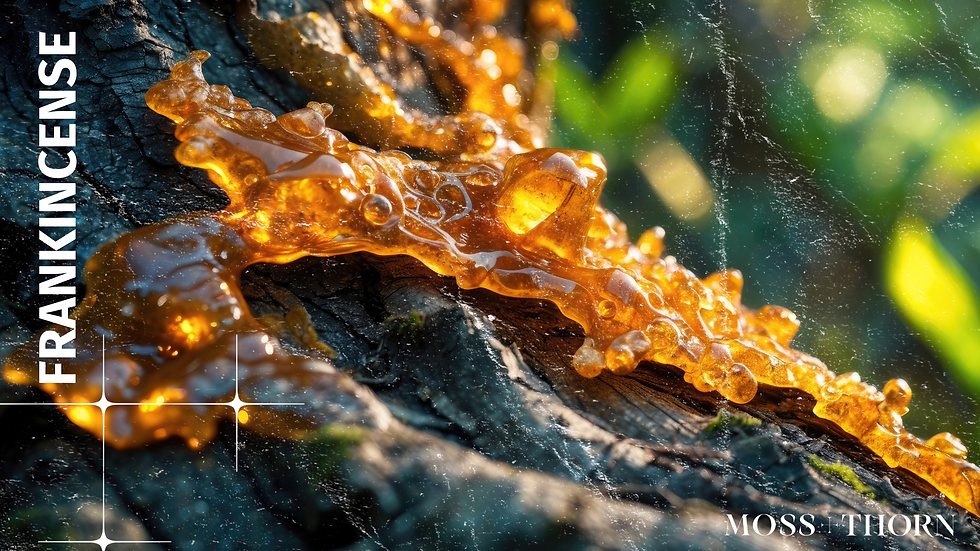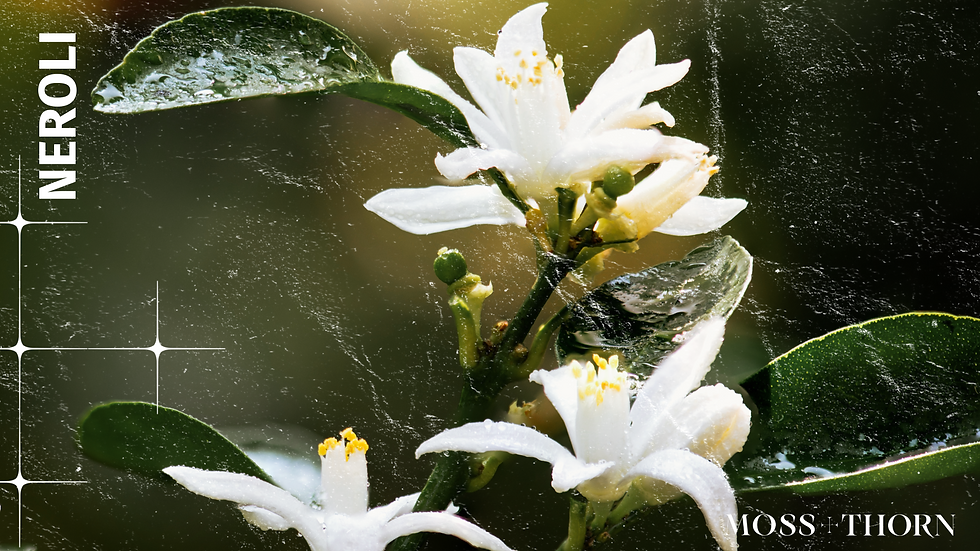Frankincense
- Sarina Ehrgott
- Jul 7
- 1 min read
Frankincense is not flower or leaf, but hardened resin wept from the Boswellia tree as it heals from a cut. Harvested in arid regions from Oman to Somalia, the resin is tapped, dried, and steam-distilled into essential oil. Its scent has passed through temples and skin alike, used for both the sacred and the ordinary. It is old, but never outdated. A resin of presence.

Cultural Lineage + Ancestral Use
Frankincense has been burned, worn, and blended for over 5,000 years. It lined tombs in Egypt, perfumed offerings in Jerusalem, and scented the robes of early herbalists and priests. In Ayurveda, frankincense—called salai—was used to treat inflammation and still the breath. Islamic, Christian, and Jewish traditions alike used it to invite presence and reverence. It has always lived between body and spirit, breath and earth.
Medicinal Properties
Frankincense is best known for its anti-inflammatory and immune-modulating properties. Topically, it can help soothe arthritic pain, reduce swelling, and support wound healing. Aromatically, it slows the breath, eases anxiety, and supports meditation. Some studies suggest its use in respiratory support and even cellular regeneration. It’s gentle on skin, powerful in breath, and steadying in presence—often used in spiritual or grief work for its grounding, luminous quality.
Aroma Properties
Frankincense smells like dry sunlit stone—resin warmed by air, not fire. It opens with a bright citrus thread and softens into wood and smoke. In blends, it brings clarity and elevation. Alone, it centers. It is often described as sacred, but it’s also deeply human: present, patient, and still. A scent that steadies the edges.


